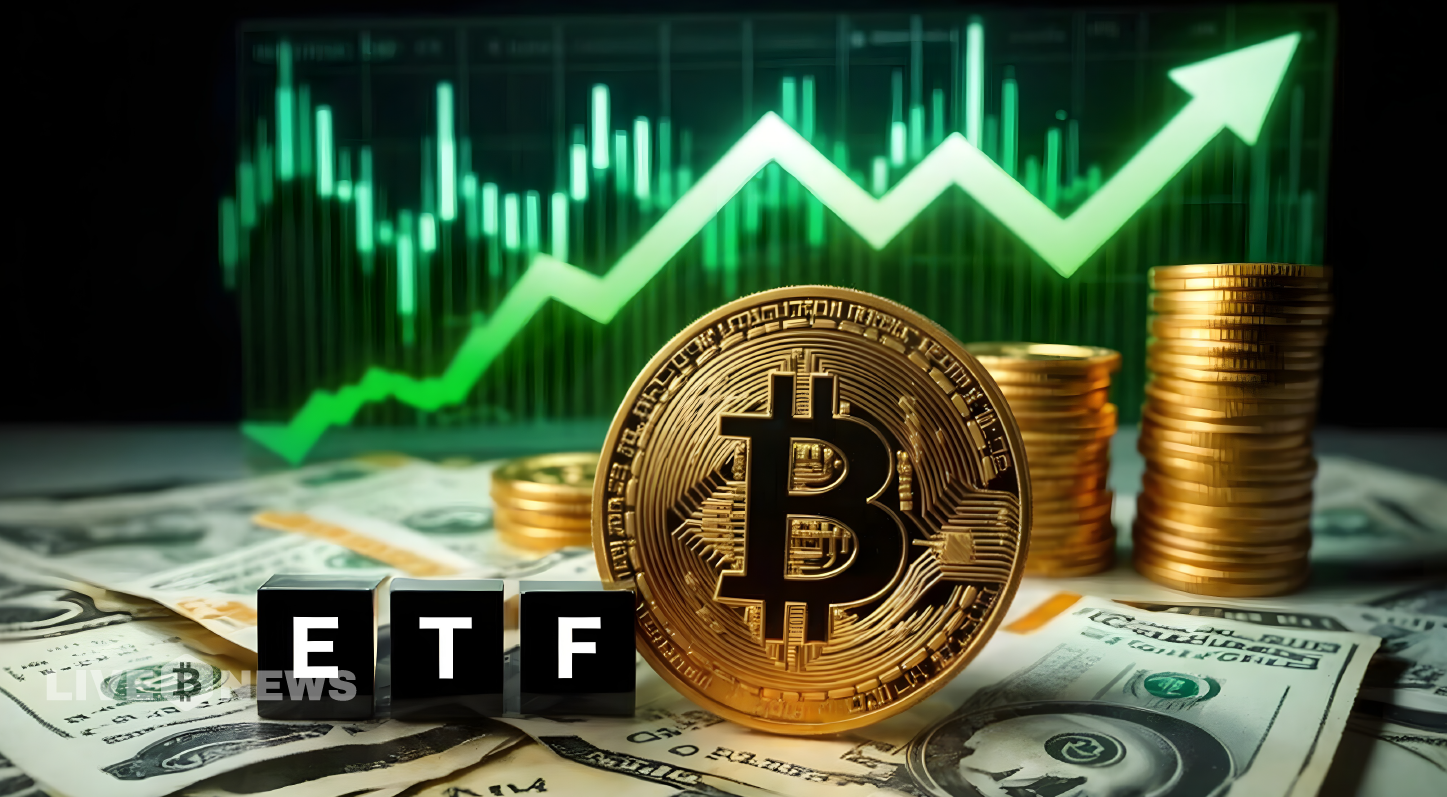In just three days. Exchange-Traded Funds (ETFs) have received an amazing $970 million in new money. This amazing rise has not only made investors more hopeful, but it has also brought up new questions about Bitcoin’s changing role in the global economy. The unexpected jump in ETF inflows shows that institutional interest has grown a lot, and this is becoming a bigger and bigger factor in determining where the cryptocurrency market is headed.
To get a better idea of what this inflow means for the bigger picture, we need to look more closely at how institutional investments in Bitcoin ETFs are changing prices, how investors feel about the market, and the overall direction of the digital asset economy.
Bitcoin ETFs Drive Institutional Adoption
Bitcoin ETFs are an important link between the regular financial markets and the decentralized world of cryptocurrency. These ETFs let hedge funds, asset managers, pension funds, and other institutional investors have exposure to Bitcoin without having to deal with the technical and custodial issues that come with owning the asset directly. They do this by providing a regulated and familiar investment structure.
 BlackRock’s iShares Bitcoin Trust (IBIT), Fidelity’s Wise Origin Bitcoin Fund (FBTC), and ARK Invest’s 21Shares Bitcoin ETF (ARKB) are some of the most well-known ETFs that have been at the core of this recent influx of cash. These funds are backed by real assets, which means they have to buy real Bitcoin to support the shares they are issuing. This connects ETF demand to spot market transactions. This relationship is very important since it brings a strong new source of demand to the Bitcoin market. When institutional money flows into ETFs, the fund managers have to buy more Bitcoin, which lowers the amount available and may raise prices.
BlackRock’s iShares Bitcoin Trust (IBIT), Fidelity’s Wise Origin Bitcoin Fund (FBTC), and ARK Invest’s 21Shares Bitcoin ETF (ARKB) are some of the most well-known ETFs that have been at the core of this recent influx of cash. These funds are backed by real assets, which means they have to buy real Bitcoin to support the shares they are issuing. This connects ETF demand to spot market transactions. This relationship is very important since it brings a strong new source of demand to the Bitcoin market. When institutional money flows into ETFs, the fund managers have to buy more Bitcoin, which lowers the amount available and may raise prices.
Institutional Demand Fuels Bitcoin Surge
Institutional investment doesn’t simply offer money. It also brings legitimacy. Long-term thinking. And less volatility. Retail investors sometimes make judgments based on their feelings about market trends. While institutional investors usually base their decisions on macroeconomic data. Portfolio diversification techniques. And risk-adjusted returns. The fact that $970 million came into Bitcoin ETFs in just three days means that there is a lot of purchasing pressure in the spot market. This lowers the amount of currency that is available for trading. Which is commonly called a “supply shock.” Because there will only ever be 21 million bitcoins. Even small increases in demand can have big implications on price.
Bitcoin has recently seen a lot of money coming in at the same time as it has found good support around $107,000 and is testing resistance levels that could lead to a surge toward $112,000. If these tendencies keep up. Institutional demand might be a strong force behind a fresh bull market, just like what happened after the 2020 ETF and corporate treasury adoption surge spearheaded by companies like MicroStrategy and Tesla.
Regulatory Clarity Boosts Bitcoin Legitimacy
Regulatory clarity has also helped investors feel better. The SEC’s latest decision about spot Bitcoin ETFs in the US is a big deal after years of saying no. The agency’s approvals have made it easier for institutional investors to get in. And they have also shown the market that Bitcoin is becoming more popular.
This effect of making things more legitimate is also having impacts around the world. Asset managers in Europe. Canada. And parts of Asia are following the U.S. trend by adding more XRP ETF Approval to their portfolios. As more traditional financial institutions become comfortable with Bitcoin. The network effect of institutional support continues to speed up adoption and make crypto more normal in the investment world.
Macroeconomic Shifts Favour Bitcoin Growth
The rise in Bitcoin ETF inflows is happening at the same time as a general change in macroeconomic attitude. Investors are going back to riskier assets now that inflation seems to be more under control and central banks, especially the U.S. Federal Reserve, are hinting that interest rates may be lowered. Bitcoin, which is sometimes called “digital gold,” could do well in this situation since it can protect against currency debasement and is also a high-growth speculative asset with the potential for asymmetric returns.
 BlackRock. Fidelity. And ARK Invest are just a few of the big names that have entered the industry. This sends a strong message to other institutional participants. These well-known companies add a level of confidence and credibility that can help more conservative individuals get used to the idea of investing.
BlackRock. Fidelity. And ARK Invest are just a few of the big names that have entered the industry. This sends a strong message to other institutional participants. These well-known companies add a level of confidence and credibility that can help more conservative individuals get used to the idea of investing.
Final thoughts
The rise in ETF activity has effects on the whole cryptocurrency ecosystem, not just the price of Bitcoin. More people want BTC ETFs, which can make investors more interested in altcoins, especially those that are part of the blockchain economy’s infrastructure. Like Ethereum. Solana. And Chainlink. In the past. Significant Bitcoin rallies caused by interest from institutions have led to capital moving into other crypto assets. This has created a rising tide that raises the whole sector.
Also, steady flows of regulated goods may lead to more innovation in financial products that are connected to digital assets. Institutional interest helps build the infrastructure and governance models of the crypto market in more sustainable and scalable ways. This includes derivative offerings, tokenized assets, and decentralized finance (DeFi) connections.








